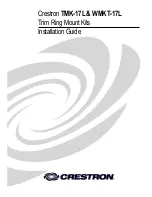
PPC4™ OPERATION AND MAINTENANCE MANUAL
© 2009 DH Instruments, a Fluke Company
Page 30
Note
•
A target pressure entry that exceeds the current upper limit (see
Section 3.2.21) or that is out of range will not be accepted as the target
value.
•
If PPC4 is unable to control pressure or appears to control pressure
poorly, see Section 8 to troubleshoot.
•
For PPC4 to set pressures under atmosphere and/or to reliably set
pressures under 20 kPa (3 psi) gauge other than zero gauge, a vacuum
pump must be connected to the EXHAUST port (see Section 2.3.5) and
PPC4 must be set up for control using a vacuum reference (see Section
3.2.27.1). Setting zero gauge pressure does not require a vacuum.
•
The
and
direct pressure control keys can be used while
controlling to jog the pressure control target value up or down by the
jog step value (see Section 3.2.20). These keys also jog the target value
when in the ENTER target value screen.
•
Due to the manner in which PPC4 handles an automated pressure
command for zero in absolute pressure measurement mode, a Ready
condition can occur at a pressure well outside of the hold limit. When
setting zero in absolute measurement mode, the Ready condition should
NOT be interpreted as meaning that the pressure is zero within the hold
limit. Ready is an indication that the rate of change of pressure inside
PPC4 has reached the current stability limit. The current pressure
measured by PPC4, not zero, should be used as the value of pressure
applied to the device or system under test.
•
When PPC4 is given a command to set zero in absolute measurement
mode, the rate of change of pressure will decrease as the pressure
decreases and the rate will eventually be near zero when the vacuum
pump has pulled down the pressure in the PPC4 and the test volume as
far as possible. To make best use of the Ready/Not Ready indication
when setting zero in absolute measurement mode, set the stability limit
(see Section 3.2.3) to a value that represents the rate of change of
pressure expected when the vacuum pump connected to the EXHAUST
port has reduced pressure as far as possible.
OPERATION
For Basic Interface, see Section 4.2.1.
For Advanced Interface, see Section 5.5.1.
3.2.13 Control
PURPOSE
To set the automated pressure control mode for the active range, customize control
parameters, activate default control parameters.
PRINCIPLE
The Control function allows the active control mode for the current range to be set to either
dynamic or static. The control mode set is specific to the active range and is saved with that
range when ranges are changed. For a complete description of the operation and purpose of
static and dynamic control modes see Section 3.2.2.
When a control mode is selected using the Control function, Control parameters are
automatically set to default values for the active range (see Table 6 for definition of PPC4
default control parameters). The default control parameters have been determined to be
Summary of Contents for PPC4
Page 70: ...PPC4 OPERATION AND MAINTENANCE MANUAL 2009 DH Instruments a Fluke Company Page 58 Notes...
Page 194: ...PPC4 OPERATION AND MAINTENANCE MANUAL 2009 DH Instruments a Fluke Company Page 182 Notes...
Page 226: ...PPC4 OPERATION AND MAINTENANCE MANUAL 2009 DH Instruments a Fluke Company Page 214 Notes...
















































